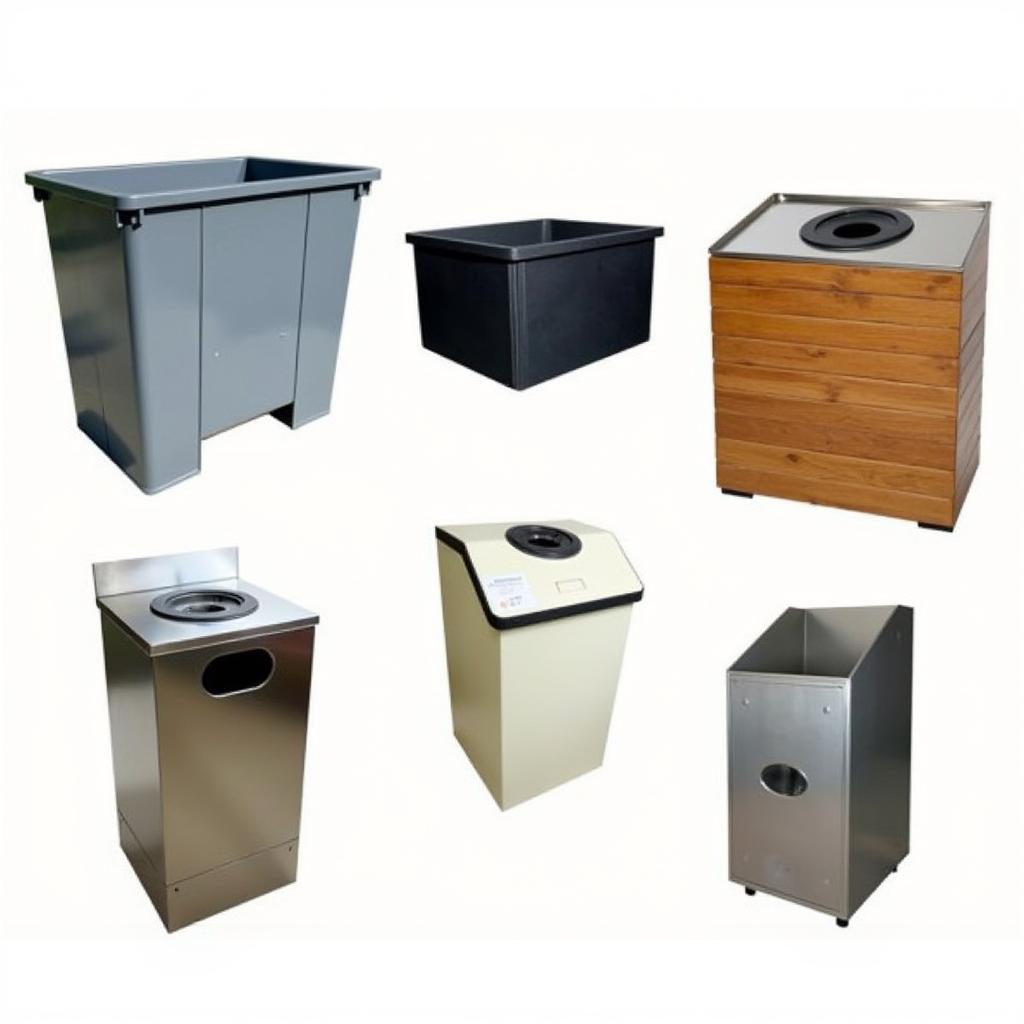Choosing the right horse feed bin is crucial for any horse owner. It not only ensures the safety and freshness of your horse’s food but also simplifies your daily routine. This guide will explore everything you need to know about Horse Feed Bins, from choosing the right size and type to maintaining and cleaning them effectively.
Why Use a Horse Feed Bin?
Horse feed bins offer numerous advantages over traditional storage methods like sacks or open containers:
- Protection from the Elements: Feed bins shield your horse’s food from moisture, rodents, insects, and birds, preventing spoilage and contamination.
- Organized Storage: They keep your feed supply organized and readily accessible, simplifying your feeding routine.
- Improved Feed Quality: The airtight seal of many horse feed bins preserves the freshness and nutritional value of your horse’s food.
- Reduced Waste: By keeping your feed dry and protected, you minimize spoilage and reduce food waste.
- Safety: Proper storage prevents the risk of horses accidentally getting into large quantities of feed, which can be dangerous.
Types of Horse Feed Bins
There are various types of horse feed bins available, each with unique features and benefits.

- Plastic: These are typically the most affordable and lightweight option. They are available in a variety of sizes and often come with features like wheels for easy movement.
- Metal: Metal feed bins are durable and long-lasting. They are resistant to dents and scratches, but may be more expensive than plastic.
- Wooden: These offer a rustic aesthetic and can be quite attractive, especially for those looking to complement their barn’s design. However, they require more maintenance than other materials.
- Combination: Some horse feed bins combine different materials to offer the advantages of each. For example, a plastic bin might have a metal frame for added strength.
Choosing the Right Horse Feed Bin Size
The size of the horse feed bin you choose depends on the following factors:
- Number of Horses: Consider the number of horses you need to feed and the volume of feed they consume daily.
- Feed Type: Different feed types have varying densities. For instance, pelleted feed takes up less space than hay or grain.
- Storage Space: Make sure you have sufficient space to accommodate the bin you choose.
Where to Place Your Horse Feed Bin
The location of your horse feed bin is critical:
- Dry and Well-Ventilated: Choose a dry, well-ventilated area to protect your feed from moisture.
- Easy Access: Ensure that the bin is accessible to you and your horses.
- Secure Location: Consider the security of the location to deter pests and unauthorized access.
Maintaining and Cleaning Your Horse Feed Bin
Regular maintenance is essential to keep your horse feed bin in good condition:
- Clean Regularly: Wash the bin with soap and water after each bag of feed is emptied.
- Inspect for Damage: Look for any signs of cracks, dents, or rust that could compromise the integrity of the bin.
- Replace Damaged Bins: Replace any damaged bins immediately to ensure your horse’s feed is safe and protected.
Horse Feed Storage Tips
Here are some additional tips to keep your horse’s feed fresh and safe:
- Rotate Your Stock: Use the oldest feed first to prevent spoilage.
- Store in a Cool, Dry Place: Ideal temperatures for feed storage are between 50-70 degrees Fahrenheit.
- Avoid Direct Sunlight: Direct sunlight can degrade the quality of your feed.
- Keep Away from Chemicals: Store feed away from any pesticides, fertilizers, or other chemicals that might contaminate it.
“The best way to ensure your horse’s feed is fresh and safe is to rotate your stock and store it in a cool, dry place away from any potential contaminants. Also, regular cleaning of your horse feed bin is essential to prevent the buildup of bacteria and mold.” – Dr. Emily Carter, Equine Veterinarian
Frequently Asked Questions
Q: How often should I clean my horse feed bin?
A: It’s recommended to wash your horse feed bin with soap and water after each bag of feed is emptied.
Q: What kind of soap should I use to clean my horse feed bin?
A: Use a mild, non-toxic dish soap to clean your horse feed bin. Avoid using harsh chemicals that might leave residue.
Q: Can I store hay in a horse feed bin?
A: Most horse feed bins are not designed to store hay. Hay requires more air circulation than most feed bins provide.
Q: What are some other options for horse feed storage?
A: If you don’t have enough space for a horse feed bin, you can use feed sacks, plastic tubs, or even galvanized metal garbage cans for storage. However, these options may not offer the same level of protection as a dedicated horse feed bin.
Q: Where can I buy a horse feed bin?
A: Horse feed bins can be purchased at most farm and ranch supply stores, online retailers, and even some feed mills.
Q: What should I do if my horse feed bin gets damaged?
A: If your horse feed bin gets damaged, replace it as soon as possible to ensure your horse’s feed is safe and protected.
If you need help choosing the right horse feed bin for your needs or have any questions about horse feed storage, don’t hesitate to reach out. You can call us at 0772127271, email us at [email protected], or visit us at QGM2+WX2, Vị Trung, Vị Thuỷ, Hậu Giang, Việt Nam. Our team is here to help you make the best choices for your horses’ health and well-being!